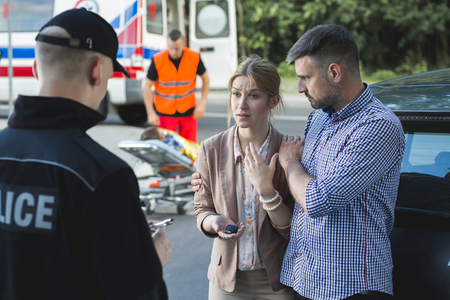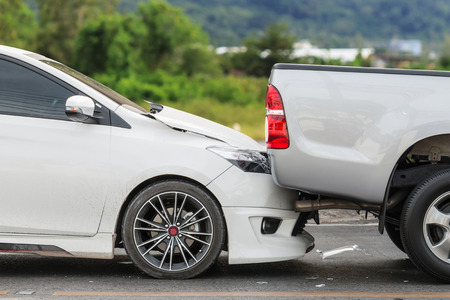

Car Accidents are a Costly Business
Cars. We drive and ride in them every day but it is a fact that most people will experience a car accident in their lifetime, possibly many. Car accidents can cause much physical, mental and financial anguish including visits to the doctor, increased insurance premiums, car repairs and possibly even a lawsuit. If you were involved in a serious car crash you may need a qualified accident attorney to protect your assets or help settle an insurance claim.
Insurance companies pay out millions of dollars per year in insurance claims and according to the Centers for Disease Control (CDC) car crash injuries cost more than $99 billion dollars per year in health costs.
Injuries from car accidents are the number one cause of death for children and adults up to the age of 34. According to car-accidents.com there are more than 6 million car accidents per year in the United States costing more than $230 billion dollars, injuring 2.9 million and killing 43,000. Every day, about 115 Americans are killed in car crashes.
How do we Reduce the Impacts of Car Accidents?
- Decrease drunk/high driving
- Decrease distracted driving
- Increase seat belt usage
- Improve child passenger safety
- Improve teen driver safety and skills
Fraudulent Accident Claims are on the Rise
Insurance companies spend millions of dollars every year fighting off accident claims for fictional motor vehicle accidents. Shockingly, there are people who cause car accidents and try to make it look like the other person’s fault in order to file a claim in their favor. A person may also be involved in a real car accident but exaggerate their injuries in order to increase their compensation. We all end up paying for this fraud through higher premiums but your personal driving record could also be negatively impacted if you are wrongly blamed for an accident.
Common Fraudulent Car Accident Claims
- Lawyers, doctors and mechanics submit claims for payment of services for an accident that never happened
- Person reports a hit and run that never happened
- Person tries to get rear ended (ex. by breaking very quickly) knowing that the accident will be blamed on the driver who hits them. The “victim” then claims excessive/fake injuries.
- After causing an accident, the person has a fake witness who makes false claims against you. ex. running a red light or speeding.
What should I do After a Car Accident? How do I Protect Myself from a Fraudulent Accusation?
- Call the police and insist in a police report even if it is a small accident.
- Keep a camera, pen and paper in your car. Take pictures and notes of everything at the scene including the cars and passengers. Note whether passengers were wearing seatbelts and if they appear injured.
- Write down contact information of any witnesses and the passengers in the other car(s).
- Do not sign any blank claim forms.
- Be suspicious of any overly helpful people that appear on the scene suggesting that you use a certain towing company, lawyer or auto repair shop; they could be involved in the scam.
- Contact your insurance agent or company immediately.
- Exchange driver’s license, insurance and car registration information.
The bottom line is that you could be the victim of a fraudulent car crash and not even know it. If something seems fishy, call the police and an experienced car accident lawyer who can help protect you from unfair insurance premium hikes or from being sued. The auto accident attorneys at Tario & Associates are here to help; contact us today!
Read More

My Car Was In An Accident But I Wasn’t Driving
The police and your auto insurance company will immediately try to determine negligence in a car accident. Although it seems hard to understand, there are common circumstances where you could be held liable and sued for negligence in a car accident even if you weren’t driving or in the vehicle at all.
Here are 3 Common Situations Where This Can Occur
An Employee Driving a Work Vehicle
An employer will be held responsible for wrongful acts including negligent driving by an employee driving for work purposes and performing a work related task. The legal terms for this responsibility are “vicarious liability” or “imputed negligence”, identifying the specific relationship between employer and employee. If an employee drives a company vehicle without permission in their non-work hours or uses the vehicle for a non-work related task, the employer would not be held responsible.
You Let a Friend or Family Member Drive Your Car
Under the negligent entrustment law in some states, if you own a car and give permission for someone else to drive it, you will be held legally responsible for any negligent driving in the car particularly if it can be proved that you knew they were unfit to drive.
You Let Your Children Drive Your Car
In many states parents are automatically liable for their kids’ negligent driving in the family car. There are specific laws and legal theories involved in this decision:
Negligent entrustment says that if a parent lends the car to a minor child who they know to be an incompetent or reckless driver they are responsible for their actions.
The Family Purpose Doctrine used in some states says that when a parent buys a vehicle for general family use then they are liable for any damages caused by negligent driving in that vehicle.
In some states signing a minor’s driver’s license application makes you legally responsible for that minor’s driving behavior.
How To Tell if a Driver is Incompetent, Reckless, or Unfit
Lending your car to a person you know falls into any of the following categories could put you at risk for committing negligent entrustment, and you could be sued for any damages caused by the driver.
- A drunk or high driver
- An underage and therefore unlicensed driver
- An inexperienced driver such as a minor with only a learner’s license
- An elderly driver with poor eyesight or reaction times
- A sick driver such as someone who experiences seizures or narcolepsy
- A driver with a history of reckless driving
If your vehicle was involved in an automobile accident and you are being sued for negligent entrustment, you may want to hire an experienced car accident attorney. We can look at every angle of the case to determine your best defense. Please contact the car accident lawyers at Tario & Associates at (360) 671-8500 today!
Read More

I Was Injured in a Car Accident that Wasn’t My Fault. What do I do?
It is vital that fault or “negligence” be determined in the case of a car accident. In some cases it may seem obvious, as in a rear-ending accident, but in others it will be a “he said, she said” situation. Proving that you were not at fault in an accident is vital for your driving record and will determine the actions taken by your insurance company. Your best bet is to find a form of official proof to support your claim of innocence. If you are having trouble defending your case, please know that an experienced car accident lawyer will take on the burden of finding proof.
Police Report
If the police came to the scene of your accident there is a good chance that a police report was written. You can obtain a copy of the report by contacting the traffic division of your local police department. If you are lucky, the report will contain an officer’s opinion or a citation for careless or negligent driving about the other party involved.
State Traffic Laws
Also called the vehicle code, each state has specific laws governing the road. You can usually find a condensed copy of these laws at your local department of motor vehicles office or a complete version at a publicl or law library. You will also be able to find this information online in the research area of nolo.com. Look for key words that might apply to your accident such as “left hand turns” or “right of way” and copy the exact wording and statute number to use in your case.
“No-Doubt” Liability
No-doubt liability applies in certain types of accidents and means that the other driver is at fault 99% of the time. You will not have a difficult time proving your case in these circumstances:
Rear-End Collision
Drivers are required to leave an appropriate amount of space between themselves and your vehicle and that means allowing for unexpected or abrupt stops. If the car is unable to stop safely and rams their vehicle into yours then it is considered negligent driving. The damage to both of your vehicles will show that it was a rear-end collision. If, however, your vehicle lacked working tail lights or had engine failure and was not moved off the road, you could be in for a “comparative negligence” case in which you will be asked to shoulder some of the blame.
Left-Turn Accidents
In almost every case, a car making a left hand turn that causes a collision into an oncoming vehicle will be held liable. The rare and hard to prove exceptions to this rule include the car going straight driving well over the speed limit or running a red light. If your accident involved one of these exceptions, you may need to seek the help of a car accident attorney to help prove your case.
If you were in an automobile accident and are being wrongly asked to shoulder some or all of the liability for the accident, you need competent legal representation. Protect your driving record and your wallet. Please contact the experienced auto accident attorneys at Tario & Associates today, we are here to help!
Read More